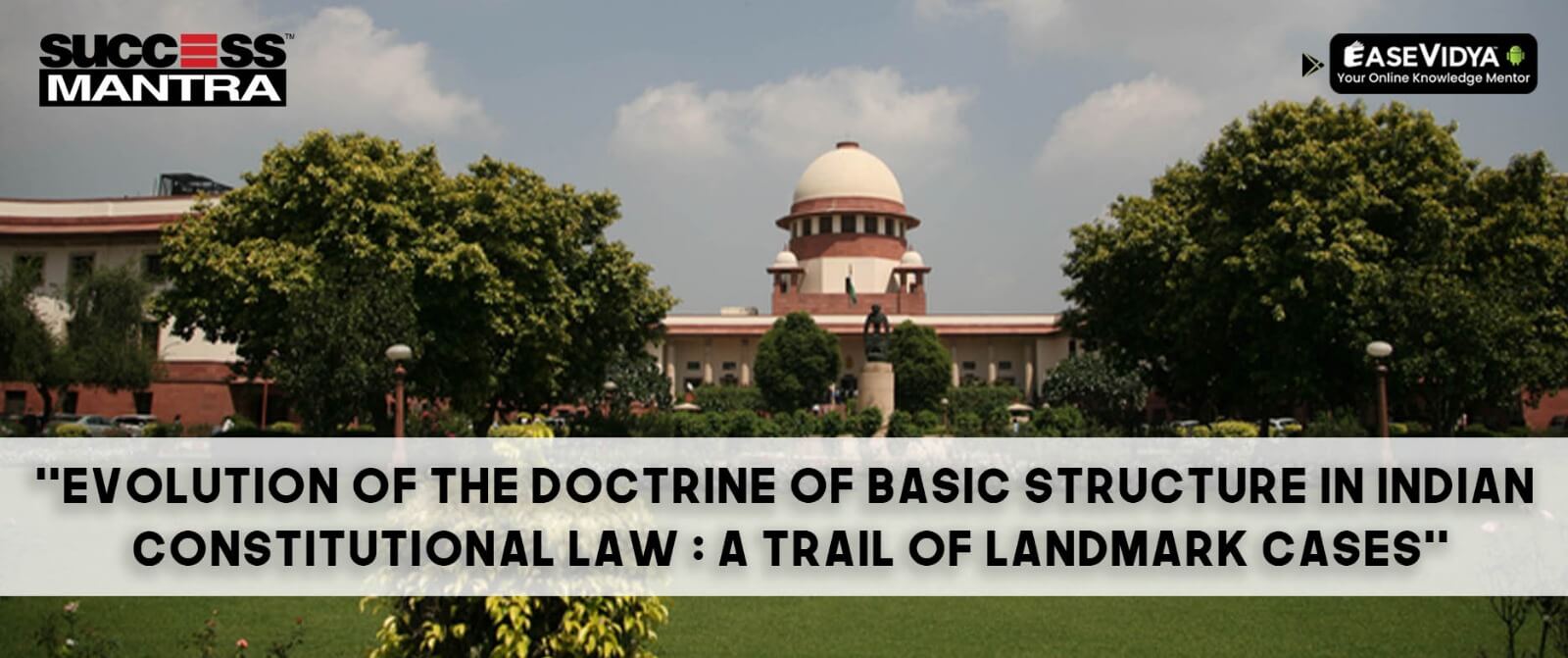
The Doctrine of Basic Structure
The Evolution of the Doctrine of Basic Structure in Indian Constitutional Law: A Trail of Landmark Cases
Introduction
This doctrine, born out of a series of historic cases, serves as a milestone against the arbitrary amendment of the Indian Constitution. In this blog post, we embark on a journey through time, tracing the trail of cases that led to the development and establishment of the Doctrine of Basic Structure.
The Genesis: Shankari Prasad and Sajjan Singh Cases
Our journey begins in 1951 with two pivotal cases: Shankari Prasad v. Union of India and Sajjan Singh v. State of Rajasthan. In these cases, the Supreme Court, in a rather conservative stance, held that the amending power of the Indian Parliament under Article 368 was virtually unlimited and extended to all parts of the Constitution, including its fundamental rights chapter. This meant that Parliament could, in theory, amend any part of the Constitution without any judicial interference.
Golaknath's Bold Assertion
However, the winds of change began to blow in 1967 when the Supreme Court, in the case of Golaknath v. State of Punjab, challenged the previous decisions. Golaknath held that Parliament's amending power did not extend to fundamental rights, effectively placing these rights beyond the reach of constitutional amendments. This landmark case marked a significant departure from the earlier decisions and set the stage for a re-examination of the Constitution's amending power.
Kesavananda Bharati and the Birth of Basic Structure
The watershed moment in the evolution of the Doctrine of Basic Structure arrived in 1973 with the case of Kesavananda Bharati v. State of Kerala. Kesavananda Bharati, a prominent spiritual leader, challenged the Kerala Land Reforms Act, which was amended by the state government. The case gave the Supreme Court an opportunity to re-evaluate the scope of Parliament's amending power and the inherent limitations, if any.
In a historic 7-6 majority decision, the Supreme Court held that while Parliament had the authority to amend the Constitution under Article 368, this power could not be used to destroy or alter the "basic structure" or the fundamental framework of the Constitution. This marked the formal establishment of the Doctrine of Basic Structure. The court, however, did not explicitly define the elements of the basic structure, leaving it open for interpretation in subsequent cases.
Exploring the Basic Structure Components
Following the Kesavananda Bharati case, Indian courts gradually began to identify the components of the basic structure through various judgments. Some of the key components recognized by the courts include:
- Supremacy of the Constitution: This principle ensures that the Constitution is the supreme law of the land, and all laws, including constitutional amendments, must conform to it.
- Rule of Law: The doctrine emphasizes that the rule of law must prevail, and the government, including the Parliament, must act within the framework of the Constitution.
- Democracy: The basic structure upholds democratic principles, including free and fair elections, as an integral part of the Indian Constitution.
- Secularism: The principle of secularism, enshrined in the Constitution's preamble, is considered a part of the basic structure, promoting religious tolerance and equality.
- Federalism: The distribution of powers between the central and state governments, as outlined in the Constitution, is a vital component.
- Fundamental Rights: The protection of fundamental rights is an essential part of the basic structure, ensuring individual liberties are safeguarded.
Landmark Cases Defining Basic Structure Components
Over the years, several landmark cases have played a role in further defining the components of the basic structure:
- Minerva Mills v. Union of India (1980): This case emphasized the importance of judicial review as a basic structure component.
- Indira Gandhi v. Raj Narain (1975): The court held that free and fair elections were an integral part of the basic structure.
- Waman Rao v. Union of India (1981): Federalism and the distribution of powers were reaffirmed as part of the basic structure.
- S.R. Bommai v. Union of India (1994): The case emphasized secularism as a fundamental component.
Conclusion
The Doctrine of Basic Structure, born out of a series of landmark cases, has emerged as a pivotal concept in Indian constitutional jurisprudence. It acts as a safeguard against the arbitrary alteration of the Constitution's fundamental principles and values, ensuring that the foundational framework of the Indian democracy remains intact. While the components of the basic structure continue to evolve, they serve as a testament to the resilience of the Indian Constitution and its commitment to upholding the principles of justice, liberty, equality, and democracy. The Doctrine of Basic Structure stands as a testament to the wisdom and vision of the Indian judiciary in preserving the essence of India's constitutional democracy.













Jessenon
<a href=https://xn--80alrehlr.xn--80adxhks/>купить оземпик +в казахстане</a> - оземпик +от диабета цена, оземпик препарат +в москве
canada pharmacies
This post offers clear idea designed for the new viewers of blogging, that actually how to do running a blog.